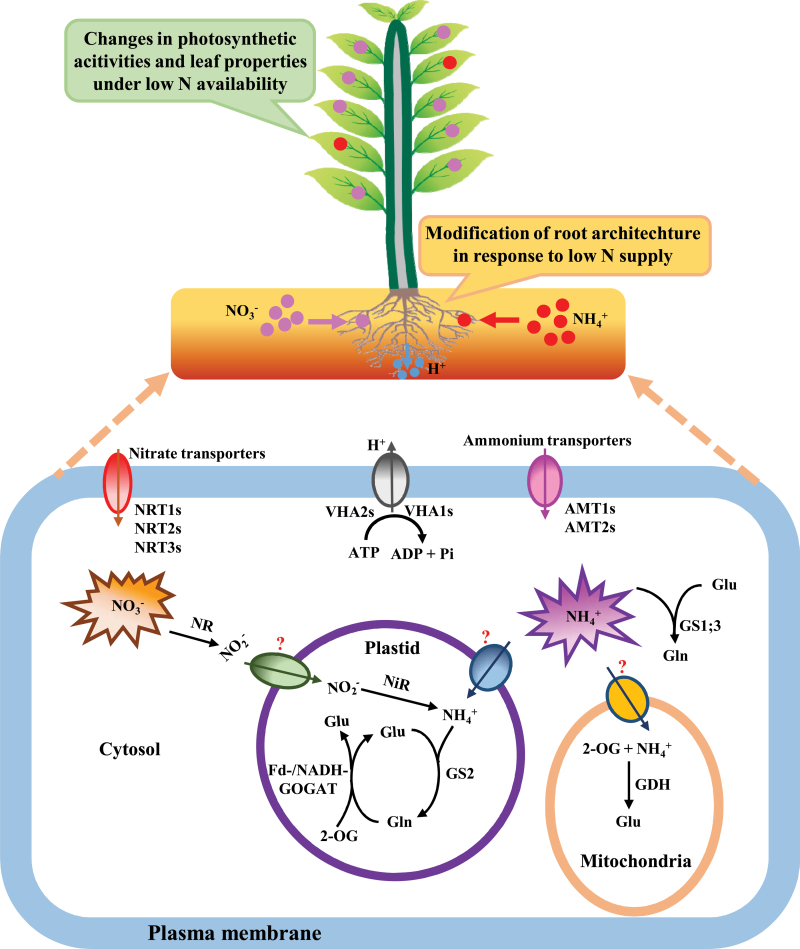Fig. 1.
A conceptual model of N metabolism in plants. In the uptake process, NH4 + and NO3 – enter the cytosol via ammonium (AMTs) and nitrate (NRTs) transporters, respectively, coupled with plasma membrane H+-ATPases (VHAs). After uptake in roots, NH4 + and NO3 – can be translocated to leaves or other parts of the plant. In the assimilation process, NO3 – is converted to NH4 + by the cytosolic nitrate reductase (NR) and the plastidic/chloroplastic nitrite reductase (NiR). Subsequently, NH4 + can be assimilated to glutamine (Gln) catalysed by glutamine synthetase (GS) isoenzymes either in the plastid or the cytosol. The Gln in the plastid with 2-oxoglutarate (2-OG) can be further converted to glutamate (Glu) by Fd- or NADH-dependent glutamate synthase (Fd/NADH-GOGAT). Additionally, in the mitochondrion, NH4 + can be assimilated to Glu with glutamate dehydrogenase (GDH). The synthesized N compounds provide precursors for amino acids, proteins, and other N-containing metabolites which can be utilized by plant growth. At the cellular level, N metabolism in plants can be affected by external low N availability. At the plant level, root characteristics, photosynthetic activity, and leaf properties can be altered in response to low N supply (this figure is available in colour at JXB online).

